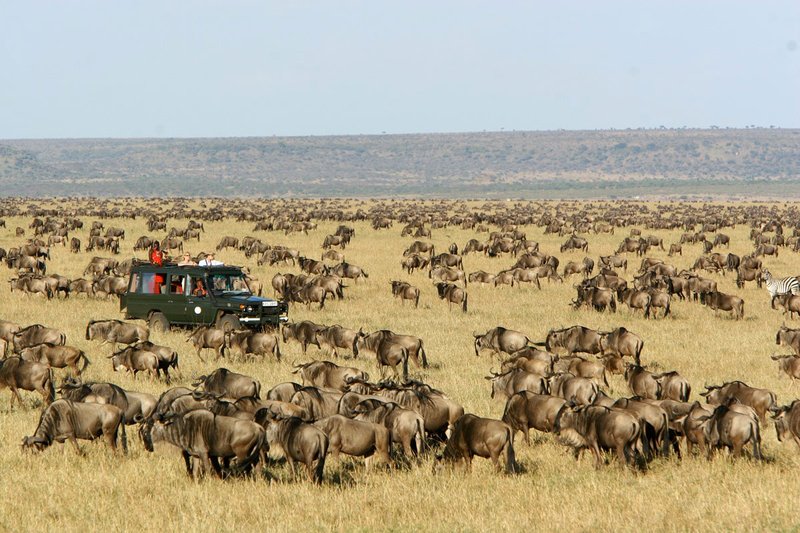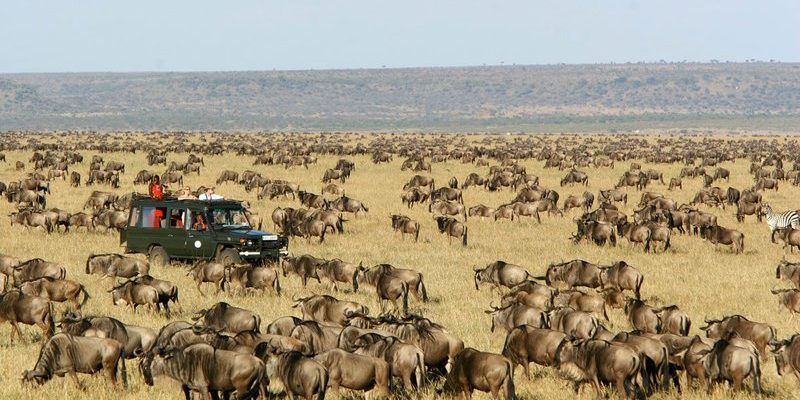
Introduction to the Mara
You might not have heard of the mara before, but this fascinating animal deserves some attention. Imagine a creature that looks like a cross between a rabbit and a small deer, gracefully hopping across the open landscapes of Argentina. The mara, also known as the Patagonian Cavy, is a unique rodent that’s not only adorable but also plays an important role in its ecosystem. It’s a charming animal that captures the essence of the South American wilderness.
If you’re curious about how these animals live, what they eat, and where you can find them, you’re in the right place! Let’s dive into the wonderful world of the mara, explore its characteristics, and learn about its habitat and behavior.
Physical Characteristics of the Mara
When you first spot a mara, you’ll likely be struck by its size and appearance. These rodents can grow to be about the size of a medium dog, measuring around 28 to 30 inches long and standing about 12 to 16 inches tall at the shoulder. Their long, slender legs make them look quite graceful, and they have distinctively large ears that help them detect predators in the wild.
One of the most striking features of the mara is its fur. The coat is usually a warm grayish-brown color, which helps it blend into the grasslands and rocky terrains it calls home. They have a well-defined white patch on their belly, and their tails are short and bushy. Overall, the mara’s physique is perfectly adapted for running, which is essential for escaping from predators like foxes or birds of prey.
You might also notice that maras have a unique way of moving. They can run at speeds of up to 29 miles per hour! This speed is crucial for their survival, allowing them to quickly escape from danger. Maras are also social creatures and often live in groups known as “warrens,” which consist of several individuals. This social behavior not only helps them feel secure but also aids in locating food and avoiding threats.
Habitat and Distribution
The mara thrives in open, arid landscapes, particularly in the grasslands and scrublands of Argentina, especially in the regions of Patagonia. They prefer areas with ample vegetation, where they can find food and shelter from the elements. The vast plains and the characteristic rocky outcrops provide a perfect backdrop for these fascinating creatures.
Interestingly, maras are not found in dense forests or high mountain areas. Instead, their habitat is typically characterized by low shrubbery, sparse trees, and open fields. This preference for open spaces is crucial because it allows them to see predators from a distance and makes it easier for them to escape when they need to.
While their natural habitat is primarily in Argentina, maras have been introduced to other parts of the world for conservation efforts. However, they still face threats from habitat destruction due to agriculture and urban development, making it vital to protect their natural environments.
Diet and Feeding Habits
Mara are herbivores, and their diet mainly consists of grasses, leaves, and seeds. They have a remarkable ability to dig and root around in the soil to find nutritious plants, which is essential for their survival in the arid habitats where they live. You might be surprised to learn that maras can consume many types of vegetation, but they particularly favor tender grasses and young shoots.
Unlike some other rodents, maras have a unique feeding behavior. They feed during the early mornings and late afternoons, usually when the temperatures are cooler. This behavior not only helps them avoid the heat but also increases their chances of finding food. They often graze in small groups, which allows them to take turns keeping lookout for potential threats.
Another fascinating aspect of their diet is that maras are known to occasionally eat their own feces! This behavior, known as coprophagy, helps them extract additional nutrients from their food. It’s a natural part of their digestive process and allows them to make the most out of their herbivorous diet.
Social Structure and Behavior
Mara are highly social animals that thrive in groups, which can range from a small family unit to larger groups of 10 or more individuals. Within these groups, they establish a social hierarchy and engage in various behaviors to maintain bonds. For instance, they often groom each other, which strengthens their relationships and promotes social cohesion.
The communication between maras is quite remarkable as well. They use a variety of vocalizations and body language to convey information to each other. You might hear soft whistles or grunts, especially when they are alarmed or trying to warn others in their group about possible dangers nearby.
One of the most interesting behaviors of maras is their distinctive mating rituals. During the breeding season, males will often engage in displays to attract females, showcasing their strength and agility. Once paired, they form monogamous bonds, and both parents participate in raising their young, which is quite rare among rodents.
Reproduction and Lifespan
Mara typically mate in the spring, and after a gestation period of approximately 75 to 80 days, females give birth to a litter of one to three offspring. The young maras are precocial, meaning they are born with their eyes open and are able to move around shortly after birth. This adaptation is crucial as it allows them to keep up with the group and avoid predators right from the start.
The little ones are not fully independent right away; they usually stay with their mother for several months, learning essential survival skills. This nurturing period is vital for their development as it teaches them how to find food and recognize potential threats in their environment.
In the wild, maras can live up to about 6 to 8 years, although some have been reported to live longer in captivity. This lifespan reflects the challenges they face in the wild, where mortality is influenced by predation and environmental factors. Understanding their reproduction and growth patterns is essential for conservation efforts, especially as their habitats continue to shrink.
Conservation Status
Sadly, the mara is classified as Near Threatened on the IUCN Red List. This designation highlights the challenges they face in the wild, primarily due to habitat loss from agricultural expansion and urban development. Conservation efforts are underway to help protect their natural habitats and ensure their populations remain stable.
Organizations focused on wildlife conservation work to promote awareness about the mara and its needs. By creating protected areas and supporting sustainable land use practices, they aim to preserve the unique ecosystems maras depend on.
Additionally, education is a vital part of conservation. By informing local communities about the importance of maras and their habitats, conservationists can foster a sense of responsibility toward preserving this special species. It’s a challenge, but small steps can lead to significant changes in protecting the mara for future generations.
Interesting Facts about the Mara
Maras are truly unique animals with a lot of fascinating features. Here are a few interesting facts that might surprise you:
| Scientific Name: | Dolichotis patagonum |
| Size: | 28 to 30 inches long |
| Weight: | 20 to 40 pounds |
| Speed: | Up to 29 miles per hour |
| Habitat: | Grasslands of Argentina |
| Diet: | Grasses, leaves, and seeds |
| Lifespan: | 6 to 8 years in the wild |
While maras are rodents, they have some features that may remind you of other animals. For example, their long legs and hopping movement are reminiscent of a kangaroo. This unique combination makes them a remarkable example of how nature adapts and evolves.
You might also find it fascinating that maras can communicate with each other through various sounds, including whistles and grunts. This vocalization is crucial for maintaining social bonds and alerting each other about dangers.
FAQ
Where can I see maras in the wild?
Maras are primarily found in the open grasslands of Argentina, particularly in the Patagonia region. If you’re planning a visit, look for them in national parks or nature reserves where they roam freely. Keep an eye out in the early mornings or late afternoons, as that’s when they are most active and likely to be spotted.
What do maras eat?
Maras are herbivores that primarily consume grasses, leaves, and seeds. Their diet is essential for their survival, especially in arid environments where food can be scarce. They have a unique ability to dig and find vegetation underground, allowing them to thrive even in tough conditions.
Are maras social animals?
Yes, maras are very social creatures. They live in groups known as “warrens,” which can include several individuals. This social structure helps them feel secure, communicate effectively, and find food more easily. Grooming and playing together strengthen their bonds, making them quite a tight-knit community.
What is the mara’s reproductive process like?
Maras typically mate in the spring and have a gestation period of about 75 to 80 days. A female usually gives birth to one to three offspring, which are precocial and can move around shortly after birth. The mother nurtures them for several months before they gain independence.
How fast can a mara run?
Maras are quite fast and can reach speeds of up to 29 miles per hour. This incredible speed is a crucial adaptation that helps them escape from predators in their open grassland habitats where they are often exposed.
Is the mara endangered?
The mara is currently classified as Near Threatened on the IUCN Red List. Habitat loss due to agriculture and urban development poses significant threats to their populations. Conservation efforts are in place to protect their habitats and raise awareness about their needs.
What adaptations help maras survive in their habitat?
Maras have several adaptations that aid their survival. Their long legs enable them to run quickly, while their large ears help them detect predators. Their herbivorous diet allows them to thrive in their grassland habitats, and their social structure enhances their ability to communicate and find food.
Can maras be kept as pets?
While maras may seem cute and appealing as pets, they are wild animals that require specific environmental conditions to thrive. They are best suited for their natural habitats and should be appreciated in the wild rather than domesticated.
How long do maras live?
In the wild, maras typically live for about 6 to 8 years. However, they can live longer in captivity where they are protected from predators and have consistent access to food and care.
What role do maras play in their ecosystem?
Maras play a vital role in their ecosystems as herbivores. By eating various plants and grasses, they help maintain the balance of their habitats. Their digging behavior can also contribute to soil aeration, promoting healthy plant growth.
Are maras related to other rodents?
Yes, maras are part of the Caviidae family, which includes other rodents like guinea pigs and capybaras. However, they have unique characteristics and adaptations that set them apart from other members of their family.
How do maras communicate with each other?
Maras use a range of vocalizations, including whistles and grunts, to communicate. They also rely on body language to convey messages, especially when alerting each other about potential threats in their environment. This communication is essential for maintaining their social bonds.
What threats do maras face in the wild?
The primary threats to maras come from habitat loss due to agriculture and urban development. Additionally, predation by natural enemies such as foxes and birds of prey poses challenges to their survival. Conservation efforts aim to mitigate these threats and protect their populations.

